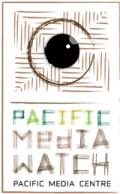
AUCKLAND (RNZ News/Pacific Media Watch): The New Zealand Herald’s new premium paywall could turn readers to digital competitor Stuff, warns Auckland University of Technology communication studies lecturer Dr Merja Myllylahti.
The Herald started charging for some of its content at the end of April – a move many in the industry viewed as risky.
In fact, the first full month of digital news websites’ audience numbers since the paywall was introduced showed the Herald dipping and Stuff gaining in both unique viewers and page views.
READ MORE: NZ Herald launches premium paywall – how will it impact on other media?
However, the paywall has since yielded positive results with 10,000 people subscribing to the premium content within the first six weeks.
A co-director of AUT’s Journalism Media and Democracy (JMAD) research centre, Dr Myllylahti said the early sign-ups bode well for the paywall, but The Herald would need to keep a close eye on the numbers over the next couple of months.
“It’s encouraging early signs, but we have to be careful because when that two month offer runs out, a lot of people might have taken that offer for two months, and then they might drop out,” she said.
First-year goal
The figure of 10,000 is also the paper’s first-year goal.
“We’re obviously thrilled,” said Herald editor Murray Kirkness.
“I think people now understand that if you want something you now have to pay. For a long time in the digital world that perhaps wasn’t the case,” he said.
“In the news sense, no matter where you look around the world – certainly in the western world – it’s now almost the norm to have some paywalled content rather than it all being free.”
Annual subscriptions to the paywall cost $199, or readers can pay $5 per week to access the premium content. For the first couple of months The Herald is offering a discounted rate; half price access, as a sweetener to get people on board.
Just over a third of the current 10,000 subscribers signed up for a whole year, leaving two thirds paying per-week.
“We’re obviously aware of churn, and that’s something that any subscription model has to deal with every day,” said Kirkness.
“Of course, we’ve had subscribers for a very long time in terms of print… so we’re well used to managing that business arrangement.”
Soft paywall
The Herald has opted for a soft paywall, so most of its stories remain free to readers.
However, in New Zealand and around the world newsrooms are trialling other models too.
Newsroom.co.nz has both paywalled content in its Newsroom Pro section, and asks for donations to continue its journalism. National Business Review requires readers to subscribe to read its content.
Internationally, The New York Times and Washington Post let readers view a set number of articles a month before bringing up the paywall. Like Newsroom, The Guardian newspaper – which is run by a charitable trust – asks readers to support its journalism by making donations.
This article is published under the Pacific Media Centre’s content partnership with Radio New Zealand.
This work is licensed under a Creative Commons Attribution-NonCommercial 3




